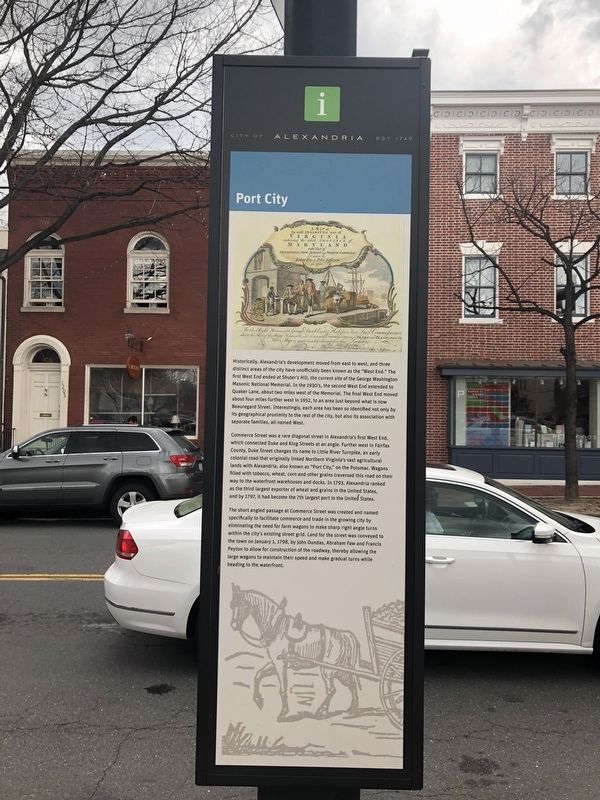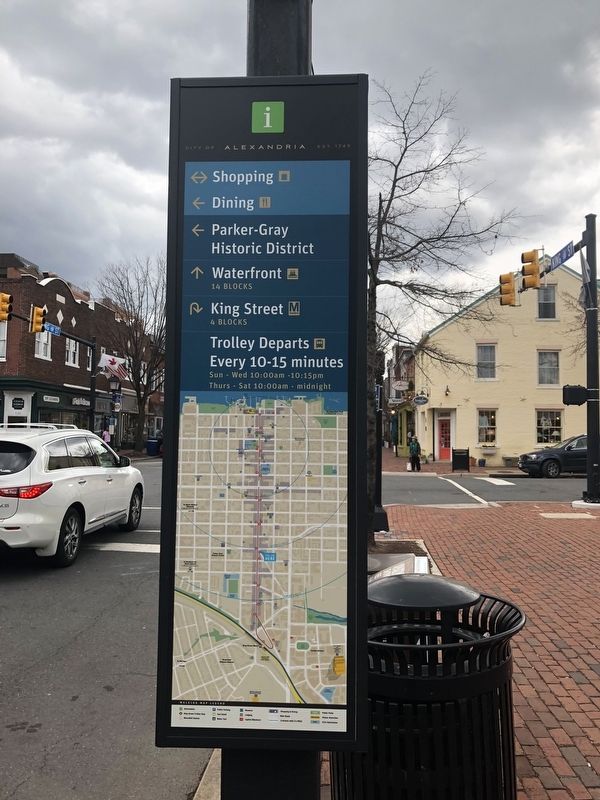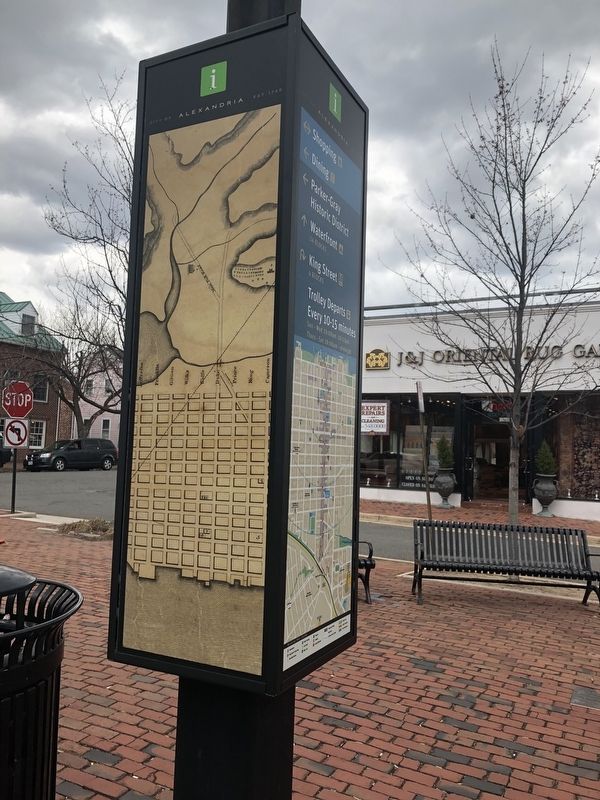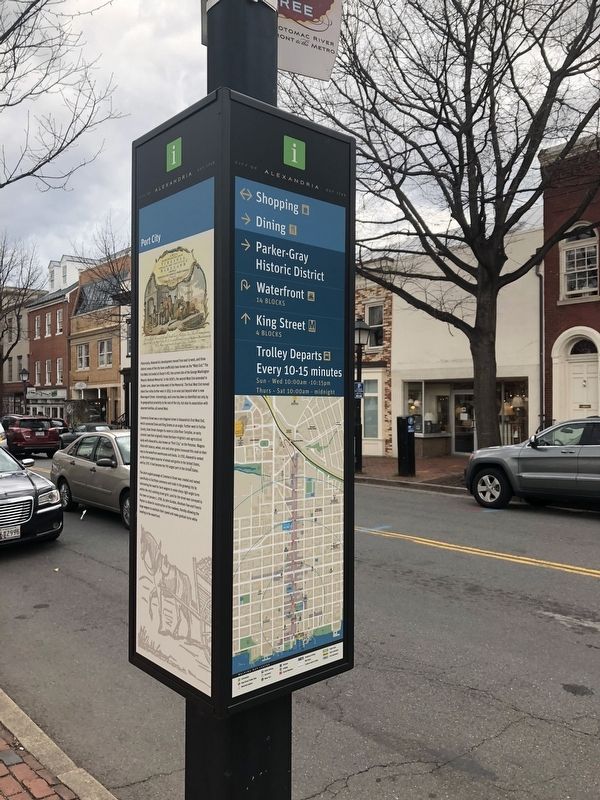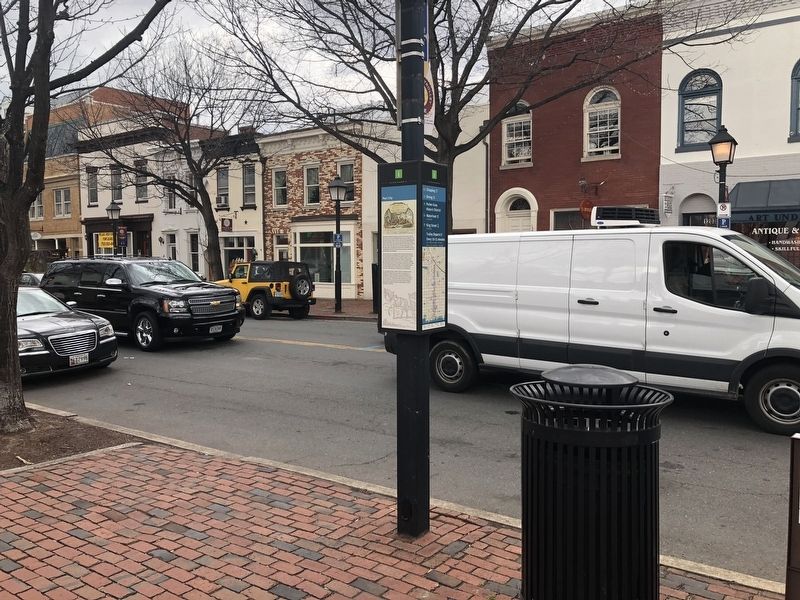Old Town in Alexandria, Virginia — The American South (Mid-Atlantic)
Port City
City of Alexandria Est. 1749
Historically, Alexandria's development moved from east to west, and three distinct areas of the city have unofficially been known as the "West End." The first West End ended at Shuter's Hill, the current site of the George Washington Masonic National Memorial. In the 1930's, the second West End extended to Quaker Lane, about two miles west of the Memorial. The final West End moved about four miles further west in 1952, to an area just beyond what is now Beauregard Street. Interestingly, each area has been so identified not only by its geographical proximity to the rest of the city, but also its association with separate families, all named West.
Commerce Street was a rare diagonal street in Alexandria's first West End, which connected Duke and King Streets at an angle. Further west in Fairfax County, Duke Street changes its name to Little River Turnpike, an early colonial road that originally linked Northern Virginia's vast agricultural lands with Alexandria, also known as "Port City," on the Potomac. Wagons filled with tobacco, wheat, corn and other grains traversed this road on their way to the waterfront warehouses and docks. In 1793, Alexandria ranked as the third largest exporter of wheat and grains in the United States, and by 1797, it had become the 7th largest port in the United States.
The short angled passage at Commerce Street was created and named specifically to facilitate commerce and trade in the growing city by eliminating the need for farm wagons to make sharp right angle turns within the city's existing street grid. Land for the street was conveyed to the town on January 1, 1798, by John Dundas, Abraham Faw and Francis Peyton to allow for construction of the roadway, thereby allowing the large wagons to maintain their speed and make gradual turns while heading to the waterfront.
Erected by City of Alexandria.
Topics and series. This historical marker is listed in these topic lists: Industry & Commerce • Roads & Vehicles • Waterways & Vessels. In addition, it is included in the Virginia, The City of Alexandria series list. A significant historical date for this entry is January 1, 1798.
Location. 38° 48.345′ N, 77° 3.162′ W. Marker is in Alexandria, Virginia. It is in Old Town. Marker is on King Street (Virginia Route 7) west of South Fayette Street, on the right when traveling east. Touch for map. Marker is at or near this postal address: 1200 King Street, Alexandria VA 22314, United States of America. Touch for directions.
Other nearby markers. At least 8 other markers are within walking distance of this marker. Carver School (within shouting distance of this marker); The Growth of Upper King Street (about 300 feet away, measured in a direct line); Capt. James McGuire House
Credits. This page was last revised on January 28, 2023. It was originally submitted on March 31, 2018, by Devry Becker Jones of Washington, District of Columbia. This page has been viewed 226 times since then and 18 times this year. Photos: 1, 2, 3, 4, 5. submitted on March 31, 2018, by Devry Becker Jones of Washington, District of Columbia. • Bernard Fisher was the editor who published this page.
